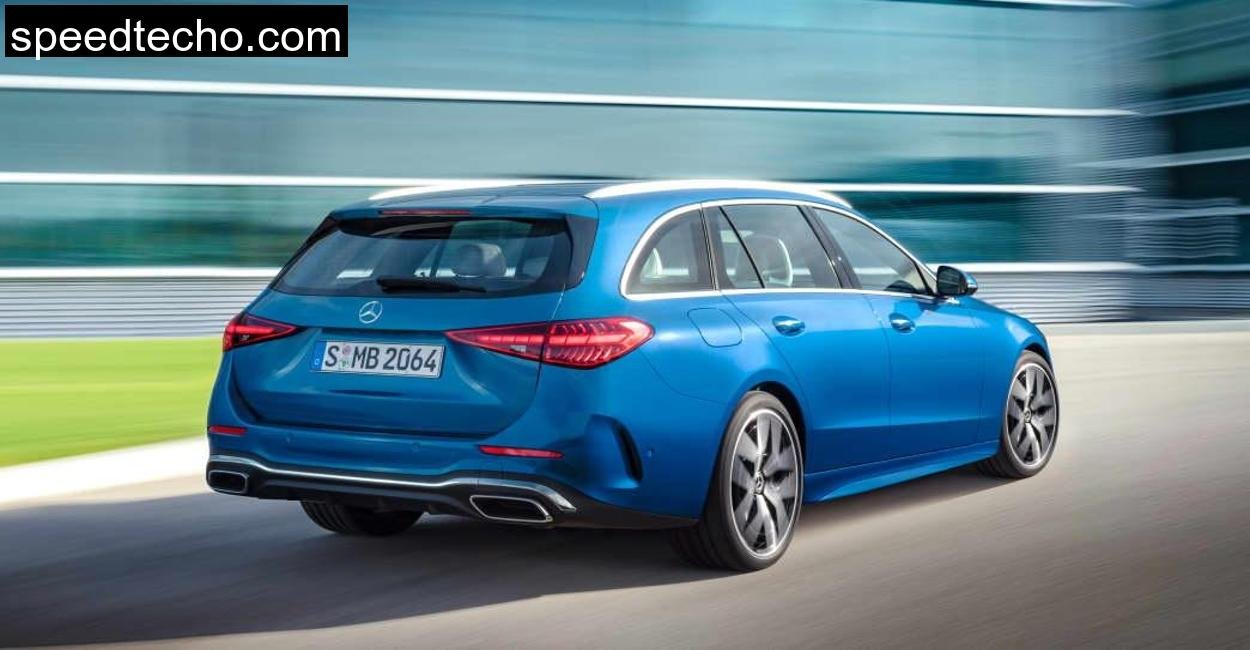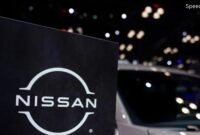It was just past seven on a summer morning when I turned off the B278 near Tann and let the Mercedes C, Class Estate stretch its legs through the soft curves of the Rhön highlands. The road ahead wound between rolling meadows and dense spruce forests, sun barely cracking through misty ridgelines.
This wasn’t just a drive. It was a test of everyday usability and luxury. And if there’s any car that aims to bridge those two worlds, family practicality and automotive sophistication, it’s the Mercedes C, Class Estate. In my case, I had not one but two versions on hand: the diesel, powered C 300 d and the plug, in hybrid C 300 e. Both shared the same body and badge, yet lived two very different lives.

Design and First Impressions: Form Follows Function, With Swagger
Even parked under a mossy spruce at 1,000 meters elevation near Wasserkuppe, the C, Class Estate looked sharp. Mercedes hasn’t radically reinvented the exterior, but the stretched silhouette of the wagon feels purposeful. Its 4.75, meter length doesn’t seem bulky, instead, it’s fluid. The long bonnet gives it prestige, the sloping rear adds elegance.
Both test models came dressed in AMG Line trim. With aggressive intakes, 18, inch alloys, and lowered suspension, it felt more Stuttgart café racer than family hauler. Yet even with the styling tricks, the proportions scream “utility,” and that’s the point. This is not an SUV. It’s not pretending to be one either. The C, Class Estate is for drivers who still appreciate balance and linearity in a car, both in design and motion.
Inside, it’s classic Mercedes modernism. A sweeping center console meets a vertical MBUX touchscreen, and the dash glows softly with customizable ambient lighting. The materials? Exceptional. The diesel’s interior, trimmed in a dark woven leatherette, felt more robust than the pale beige vegan leather of the plug, in, but both carried a premium edge that reminded me: this isn’t entry, level luxury anymore.
Powertrains Compared: Diesel Depth vs Hybrid Duality
Mercedes didn’t hold back with this generation of C, Class. The C 300 d is a 2.0, liter turbocharged diesel with a mild, hybrid system, and it punches out 288 horsepower and 550 Nm of torque. You don’t feel the electric assist, because that’s the point. The integrated starter, generator smoothens takeoff and eliminates turbo lag so seamlessly, it might as well be magic.
On the climb from Bischofsheim to Kreuzberg, the diesel pulled confidently in third gear, hovering around 2,000 rpm, never breaking a sweat. Overtakes were effortless. There was torque to spare. Downshifts via the 9G, TRONIC were swift but unintrusive. And the numbers? My average consumption across 400 km of mixed Rhön terrain hovered at 5.8 liters/100 km. Impressive. Very.
The C 300 e, meanwhile, is a plug, in hybrid with a combined output of 313 horsepower and an equally potent 550 Nm of torque. The kicker? An electric, only range of 84 kilometers (in real, world ADAC testing). And I got 78 km on a single charge before the petrol engine kicked in on my run from Fulda to Wasserkuppe. That’s genuinely usable electric range.
But the character is different. In EV mode, the C 300 e glides silently, almost eerily so. Perfect for early, morning urban errands or nature park parking lots where silence is golden. The battery, net 19.5 kWh, gross 25.4 kWh, charges in under 30 minutes at a 55 kW DC station. And with the hybrid system, even when the battery is depleted, consumption stayed under 7.5 l/100 km.

Driving Dynamics: Wagon That Knows How to Dance
This is where the C, Class earns its badge. Both versions drove with a confidence I didn’t expect from a family estate. Rear, wheel drive, optional rear, axle steering, and adaptive dampers work together to make the C, Class feel smaller than it is.
On the narrow forest roads near the Black Moor (Schwarzes Moor), the C 300 d surprised me. The steering was fluid, the body roll tightly controlled. It doesn’t corner like a hot hatch, but it doesn’t flop like an SUV either. This is balanced handling, the kind that encourages you to drive for the sake of driving.
The plug, in, heavier by nearly 250 kg, felt a touch more sluggish in tight corners. Yet, in straight, line sprints, especially 60 to 100 km/h, it was electrifying. Literally. The electric motor fills the torque gap like a shot of adrenaline, launching the car with uncanny speed. The 0, 100 km/h dash? Done in 6.2 seconds. The diesel, with less weight, does it even quicker, 5.8 seconds.
Utility and Practicality: Bikes, Boxes, and Bottles
This blog wouldn’t be complete without discussing cargo. Station wagons are bought with practicality in mind, and here’s where reality meets brochure claims.
With the rear seats up, the diesel offered 490 liters of luggage space. Fold them down and it opens up to 1,510 liters, plenty for a full, size mountain bike (with front wheel removed) and all my camping gear. The plug, in? Less lucky. The battery eats up trunk floor volume, reducing usable space to 360 liters, and 1,375 liters max with seats folded.
Still, under the trunk floor, the diesel hides 75 extra liters of storage. I fit a full toolbox and tripod gear down there. Clever design touches like a 12V outlet, collapsible nets, and load rails made organizing the rear a breeze.
For towing? Both models handle 1,800 kg braked trailers, so caravans or bike carriers with e, bikes won’t be a problem.

Technology and Comfort: MBUX Evolves with You
The new MBUX infotainment system, now with 5G connectivity and AI, adaptive routines, is finally intuitive. After two days, it started learning my habits, pre, heating the cabin at 6:30 am, dimming ambient lights during late, night drives. And the Digital Light system? A revelation in the pitch, black forest roads near Oberelsbach, projecting precise beam patterns that felt like daylight in a tunnel.
Standard kit is generous, but this is still a Mercedes: you pay to play. Rear, axle steering, the excellent AMG Line interior, and tech packs quickly push prices past €70,000. The tested C 300 d came in at €67,848, while the plug, in hybrid C 300 e sat at €68,312.

Conclusion: The Diesel Delivers, The Hybrid Hints at the Future
After a week of real, world use in the Rhön, over highways, under alpine fog, through sleepy towns and steep climbs, the verdict is clear. If you’re chasing pure utility and long, range driving with zero stress, the C 300 d is the one. It’s powerful, efficient, and feels built for the Autobahn.
But the C 300 e has its charm. It’s for the environmentally conscious city driver who wants to sneak into nature quietly on weekends without going full EV. The electric range is class, leading. The drivetrain integration is seamless.
In the end, the Mercedes C, Class Estate proves why station wagons still matter. Not as nostalgia, but as relevance, cars that drive well, carry much, and feel properly luxurious.
Is the diesel version better than the hybrid in C Class estate?
It depends on your use case. For long, distance drivers and those who need consistent power and range, the diesel is superior. For city commuters with access to charging, the hybrid brings impressive electric, only capability.
How long does it take to charge the C Class Estate 300 e fully?
With a 55 kW DC charger, you can go from 10% to 100% in under 30 minutes. At home, an 11 kW wallbox fills it in about two hours.
Is the diesel version if C Class Estate still a good choice?
Absolutely. It offers better long, distance economy, impressive torque, and is fully compliant with current emissions standards.






